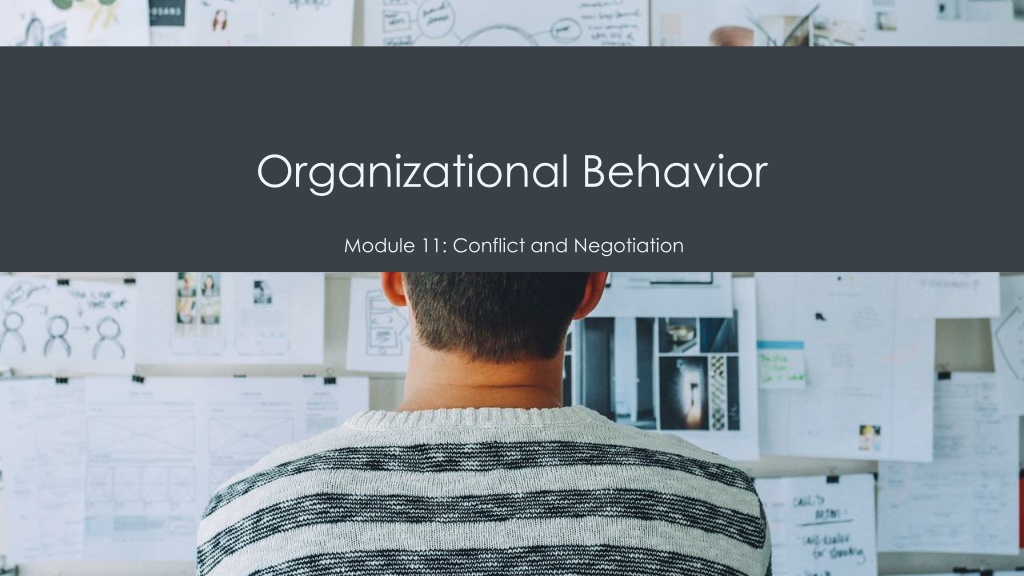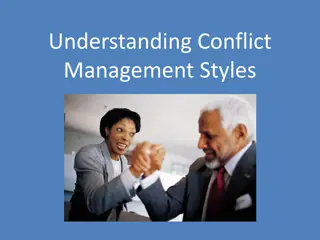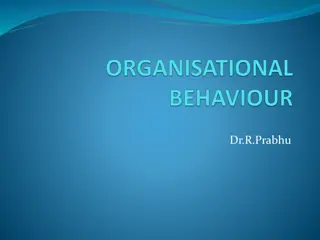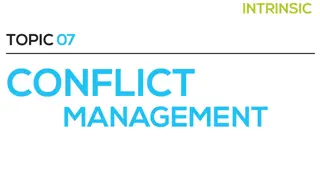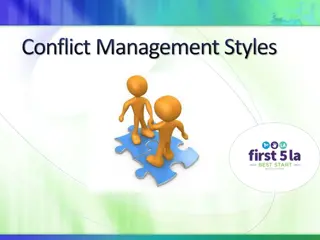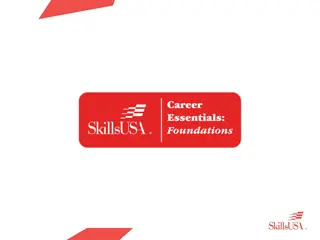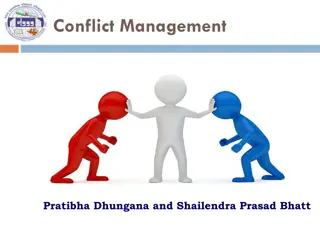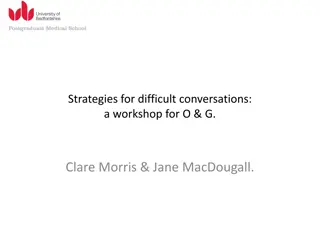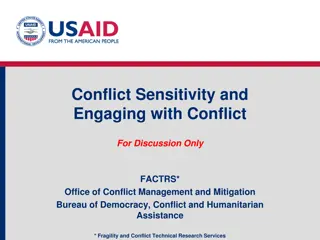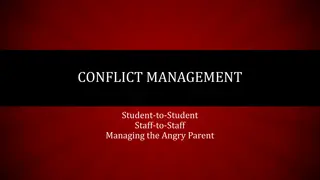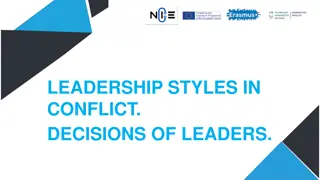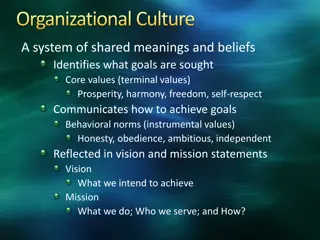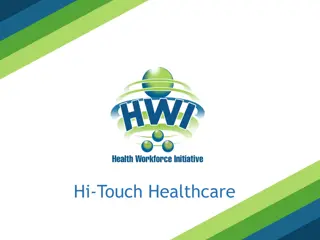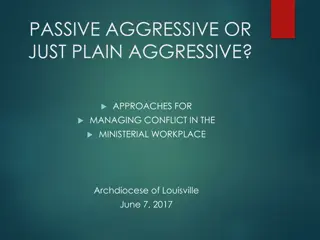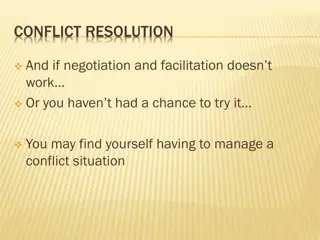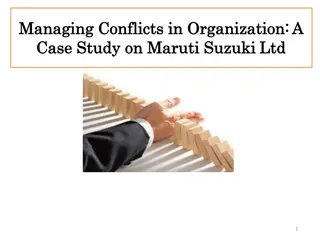Conflict Management Strategies in Organizational Behavior
Explore strategies for managing conflict and negotiation in the workplace, including the importance of conflict resolution and crucial conversations. Learn about the history of negotiating techniques within organizational behavior, the definition of conflict, types of conflict, stages of the conflict process, conflict management styles, and organizational sources of conflict. Understand the benefits and drawbacks of conflict, different views of conflict, types of conflict, stages of conflict, and various conflict management styles. Engage in a class activity to match conflict management styles to different conflict situations.
Download Presentation

Please find below an Image/Link to download the presentation.
The content on the website is provided AS IS for your information and personal use only. It may not be sold, licensed, or shared on other websites without obtaining consent from the author.If you encounter any issues during the download, it is possible that the publisher has removed the file from their server.
You are allowed to download the files provided on this website for personal or commercial use, subject to the condition that they are used lawfully. All files are the property of their respective owners.
The content on the website is provided AS IS for your information and personal use only. It may not be sold, licensed, or shared on other websites without obtaining consent from the author.
E N D
Presentation Transcript
Organizational Behavior Module 11: Conflict and Negotiation
Module Learning Outcomes Discuss strategies for managing conflict and negotiation in the workplace 11.1: Describe why conflict resolution, "crucial conversations," and other higher stakes communication is necessary to study in organizations 11.2: Discuss the history of negotiating techniques within organizational behavior
Learning Outcomes: Conflict Management 11.1: Describe why conflict resolution, "crucial conversations," and other higher stakes communication is necessary to study in organizations 11.1.1: Define conflict 11.1.2: Differentiate among types of conflict 11.1.3: Identify stages of the conflict process 11.1.4: Discuss the appropriate use of various conflict management styles 11.1.5: Identify organizational sources of conflict
What is conflict? Conflict is perception: it only exists if the person experiencing it feels that it is conflict
Positive and Negative Conflict Benefits of Conflict High energy Task focus Cohesiveness within the group Discussion of issues Disadvantages of Conflict Teams losing focus of common goals Winning eclipses any other goals of the group Distorted judgment Lack of cooperation Losing members lack motivation to continue participation
Views of Conflict Traditional view Humanistic view Interactionist view
Types of Conflict Interpersonal Intrapersonal Intergroup Intragroup
Class Activity: Determine the best style of conflict management Match the best style of conflict management to the situation 1. Settling an argument where you know you re right A. Compromise B. Compete 2. Your knowledge of the issue is limited C. Accommodate 3. The parties need to cool off D. Avoid 4. A quick solution is needed 5. Issue and people are both important E. Collaborate
Organizational sources of conflict Goal incompatibility and differentiation Interdependence Uncertainty and resource scarcity Reward systems
Practice Question 1 Which view is the way we view conflict today, and how we view it in discussions of this module? A. The Traditionalist View B. The Competitive View C. The Human Relations View D. The Interactionist View
Practice Question 2 What are the four types of conflict? A. Interpersonal and intrapersonal, intergroup and intragroup B. Incompatibility, intentions, behavior and outcome C. Interactionist, Traditionalist, Competitive, and Human Relations D. Personal, group, competitive, and organizational
Practice Question 3 Which is the stage at which conflict truly becomes evident? A. Outcomes B. Cognition and personalization stage C. Behavior D. Intentions stage
Practice Question 4 Which is the only approach to conflict management that provides a win-win situation for both parties? A. Compromise B. Collaboration C. Competing D. Avoiding
Practice Question 5 If the finance department is told by senior management to balance the budget to the penny, and then the sales department is told to wine and dine clients to get their business at almost any cost, this could be an example of what kind of organizational conflict? A. Goal incompatibility and differentiation B. Interdependence C. Uncertainty and resource scarcity D. Reward systems
Learning Outcomes: Negotiation 11.2: Discuss the history of negotiating techniques within organizational behavior 11.2.1: Discuss how negotiating is different from managing conflict 11.2.2: Describe the stages in the process of negotiation 11.2.3: Compare various types of negotiating strategies 11.2.4: Identify issues in negotiating 11.2.5: Discuss third-party negotiations
Characteristics of negotiation The parties involved are somehow interdependent The parties are each looking to achieve the best possible result in the interaction for themselves The parties are motivated and capable of influencing one another The parties believe they can reach an agreement
Types of negotiation Distributive negotiation Integrated negotiation
Negotiating Strategies: Getting to Yes (Fisher/Ury) Separate the people from the problem Focus on interests, not positions Invent options for mutual gain Insist on using objective criteria Understand your BATNA
Negotiating Strategies: Getting More (Diamond) Value the perceptions and emotions of others Think of yourself as the least important person in the negotiation Make emotional payments
Negotiating Strategies: Never Split the Difference (Voss/Raz) Tactical empathy Engage in solving the other person s problem Mirroring Baiting the no
Class Activity: How much does everyone get? Divide everyone into two groups: one is employees and one is management Each group should start a pot of money. Every individual should write on a slip of paper an amount of money to pay into the pot. You only know how much you put into the pot. When everyone has contributed, the activity leader should combine both the pots and then add the amounts together. Use a negotiation strategy to decide how much should go to management and how much should go to employees.
Issues in negotiation Personality Gender Cultural differences
Unethical Negotiation Selective disclosure Misrepresentation Deception and lying False threats and false promises Inflicting direct or indirect harm
Mistakes in negotiation Winner s curse Mythical fixed pie Overconfidence Irrational escalation of commitment
Third-party negotiations Arbitrators Conciliators Consultants Mediators
Practice Question 6 A negotiation takes place, and one person walks away with everything she wants at the cost of the other individual s settlement. What kind of negotiation is this? A. Distributive negotiation B. Integrative negotiation C. Interdependent negotiation D. Under these conditions, negotiation cannot exist
Practice Question 7 If a negotiator wants to take the opportunity to education the other party on her position, she should do this during which stage of the negotiation process? A. Planning and preparing B. Clarification and justification C. Bargaining and problem solving D. Closure and implementation
Practice Question 8 In Diamond s and Voss negotiation strategies, which of Ury and Fisher s principles has a stronger and more important focus? A. Focus on interests, not positions B. Invent options for mutual gains C. Insist on using objective criteria D. Separate the problem from the people
Practice Question 9 When a negotiator continues to negotiate for a solution long after it s been proven to be the wrong solution, this is called ______________. A. Overconfidence B. Mythical fixed pie C. Irrational escalation of commitment D. Winner s curse
Practice Question 10 Which kind of third-party negotiator acts as a go-between and relates information to one side from another, without any real involvement in the negotiation? A. Mediation B. Consultation C. Conciliation D. Arbitration
Quick Review Conflict Management There are four types of conflict Conflict has five stages no matter what type of conflict you re experiencing Choose your conflict management style by weighing the importance of the relationship vs. the importance of the outcome Negotiation Negotiating and conflict management are different Negotiation also has five stages A negotiator can approach a situation with several different strategies, but s/he should definitely focus on people Third party negotiators are available to assist with difficult negotiations
